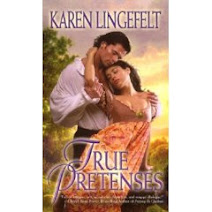Recently, I saw the latest film adaptation of the Jules Verne classic, Journey to the Center of the Earth, starring Brendan Fraser. While it didn’t blow me away, I also didn’t feel it was an hour and a half wasted. It was a vast improvement over a made-for-TV version I saw many years ago, that reeked of “pilot for a TV series that was never picked up” and stole two hours of my life I’ll never get back.
WARNING: Movie spoilers ahead, in case you haven’t seen it but it’s your lifelong dream to one day do so.
While I know the whole “Hollow Earth” idea is just a lot of hooey, I still like the idea of a world within a world. I thought it rather cool that they went in by way of Iceland, and came out via Italy. I didn’t question the speed and ease of their long descent, whether T-rex skulls are seaworthy, or if there should have been issues with gravity once they arrived at earth’s center. I was willing to suspend disbelief and go along with the giant fossilized mushrooms, the flat rocks floating in mid-air like an asteroid field, and the glow-in-the-dark birds sent to help the humans in Disneyesque fashion. And what movie about a lost world within our own real world is complete without the usual rampaging dinosaurs?
I was content to swallow every bite of this fantastic buffet of make-believe, except for one little scene in which they stretched things too far even for my wild imagination: Brendan and his leading lady get thrown out of a runaway mine cart and land flat on their backs—only to stand up, dust themselves off, and walk away.
It was one of those moments where I had to shout at the TV, “Oh, come on!” They should have been killed, or at the very least spent the rest of the movie in body casts and traction.
I have a similar reaction to the 2005 version of King Kong. I love that movie. I could believe the idea of a remote island in the farthest reaches of the South Seas, where a tiny civilization of people were forced to build a seaside fortress to protect themselves from the giant predatory beasts roaming the rest of the island. I was sold on the notion of the giant ape, the giant mosquitoes, the giant centipedes, the giant everything. I was willing to overlook the men’s superhuman ability to dodge and outrun the stampeding dinosaurs while toting heavy photographic equipment, though I would’ve just ducked into the nearest nook or cranny and let the beasts pass.
Yes, movie fans, I happily gulped it down, every outrageous morsel, till they returned to New York and Kong got to enjoy a playful, heartwarming few moments sliding around an ice-covered pond with Naomi Watts.
This is Mr. Lucky’s least favorite part of the movie. “Oh, come on!” he yells. “Do you know how thick that ice would have to be—and how deep that pond would have to be for ice that thick—to hold the weight of that ape?”
He does have a point. The ice never so much as cracked beneath the weight of the giant ape. Yet a single volley from an army tank blew it to splinters, and Kong was off and running to the Empire State Building, blonde girl literally in hand.
And that’s where I usually get pulled out of the story. Shouldn’t it be so windy at the top of the Empire State Building, that she can barely stand up? And since it is made quite obvious to the viewer that they’re in New York in the dead of winter, one can only imagine the wind chill factor: Shouldn’t she be freezing to death in that skimpy, sleeveless white gown?
I try to explain that away by assuring myself it must be very warm and cozy clenched inside Kong’s fist. But what about when he puts her down to bat at the planes? Or when he finally falls?
Why am I so willing to accept the more fantastic elements of a story, while yelling, “Oh, come on!” at the more mundane, every day elements—the situations I’m more likely to experience than fleeing dinosaurs or falling almost four thousand miles down a cave in three minutes while carrying on a conversation with my fellow fallers?
One final thought on Journey: As I watched it, I found myself contemplating the idea that Lewis Carroll and Jules Verne were two different writers with two different voices, who each wrote a story with the same basic premise: A human ventures down a hole to find a completely different world.
It must have been those giant mushrooms.
Saturday, May 30, 2009
Subscribe to:
Post Comments (Atom)









No comments:
Post a Comment